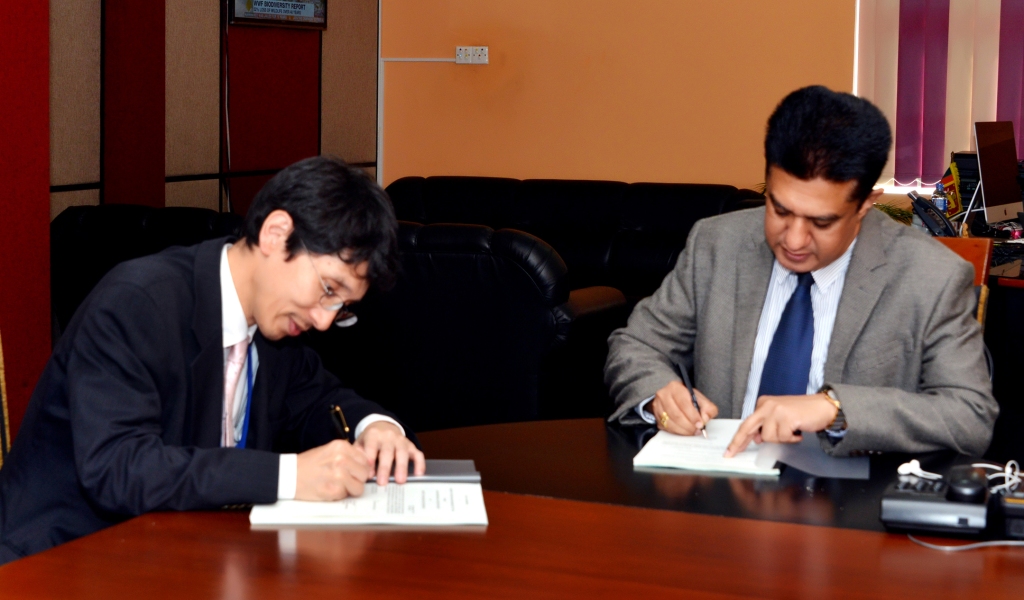Back in December, it was announced that Sri Lanka’s Digital TV broadcasting project is set to kick off. Recently, Media minister Dallas Alahaperuma stated TV channels based in the Western Province will be digitalized by end of 2023 with the Lotus tower as the central point, along with 16 other towers.
Accordingly, the project will see an increase in the capacity of the frequency spectrum in Sri Lanka. The capacity of a single frequency is expected to increase as much as eight times. This translates to potentially allowing 200 more TV channels to broadcast in the country.
However, this isn’t the first time interest in TV digitalization was made public. In fact, efforts have been underway for years and conversations around Digital TV date back to as far as 2010.
Digital TV: an ambitious start
First, what is TV digitalization and how is it different from what we experience today? Essentially, Digital TV allows you to view content in HD. But that’s only part of the package. Standard Definition transmissions are also included along with the ability to cater to varying resolutions of display sizes and aspect ratios. We’ve already talked about this back when there were talks of Digital TV around 2014.
But chatter around Digital TV date back to a little over a decade ago. In 2010, an expert subcommittee submitted a policy framework proposal for DTTB in Sri Lanka. In the report, the group recommended that Sri Lanka adopt the DVB-T2 (Digital Video Broadcasting – second generation) standard. This is the most widely used standard in many parts of the world, most notably in the European region. But more importantly, the standard was arguably the better technological choice as per the group.
By this time, investments were already made in building the infrastructure around DVB-T2. Both Rupavahini and Dialog TV invested in DVB-T transmitters. By June 2011, the Kokavil multi-functional transmission tower was rebuilt reportedly incurring an LKR 330 million price tag. It was equipped with digital video and television transmission utilizing the DVB-T2 standard. Later on, other channels like Hiru TV and Derana TV invested in DVB-T2 as well.
Let’s do ISDB-T instead
Originally, the plan was to commence the digitalization project to commence by 2011 and reach completion by 2017, effectively shutting down analog by 2017. There was even an ITU report from February 2012 that panned out the analog to digital roadmap in Sri Lanka.
Then Sri Lanka took a detour and decided to switch to the Japanese ISDB-T standard, despite the 2010 report recommending DVB-T2 and investment in infrastructure already made by both state and sectors.
While no proper justification was given at the time for the switch, part of the reason could be due to a bilateral agreement signing between Sri Lanka and Japan for a loan of Yen 13,717 million (~LKR 17.4 billion) via the Japan International Cooperation Agency (JICA). It also coincided with the Japanese Prime Minister’s visit to Sri Lanka at the time.
Japan is one of the biggest aid donors to Sri Lanka and it stands to gain commercially with the ISDB-T adoption. After all, it was Japan that helped build Rupavahini’s infrastructure decades ago.
How badly do you want Digital TV?
Then there’s also the possibility of customers having to buy extra equipment to experience DTTB. Specifically, a Set-Top-Box (STB). Why? According to Upali Arambewale, former Head of Engineering at Rupavahini, “It is very unlikely that the Smart TV receivers available in the Lankan market are compatible with ISDB-T standards as the ISDB-T TV receivers are not freely available in most parts of the Asia-Pacific region excluding Japan and most parts of the world”.

Fast forward to 2022 as Sri Lanka goes full steam ahead with the ISDB-T route and hopes to reach full implementation with Japanese assistance. Though it’s unclear if this includes enabling better accessibility from the customer’s side.
The Lotus Tower
Minister Alahaperuma recently mentioned that the western province will be digitalized via the Lotus Tower as its centralized point by end of 2023. Well, it does come as a relief of sorts to know that there’s at least an indication of making productive use of Sri Lanka’s most expensive paperweight. The best it has done for Sri Lanka so far is serve as a stock photo or a Colombo event backdrop artwork.
So, will this actually happen?
Aney manda bung.
Okay, to be fair it’s something that will take time even if everything goes according to plan. Infrastructure alone will take years to invest and implement. On top of that complete digital adoption will also need time. Now with the current situation, things might extend even further. The government claims that the project is expected to conclude by 2025. Though practical timelines may vary, as they often do. After all, the original plan was to shut down analog by 2017.






GIPHY App Key not set. Please check settings